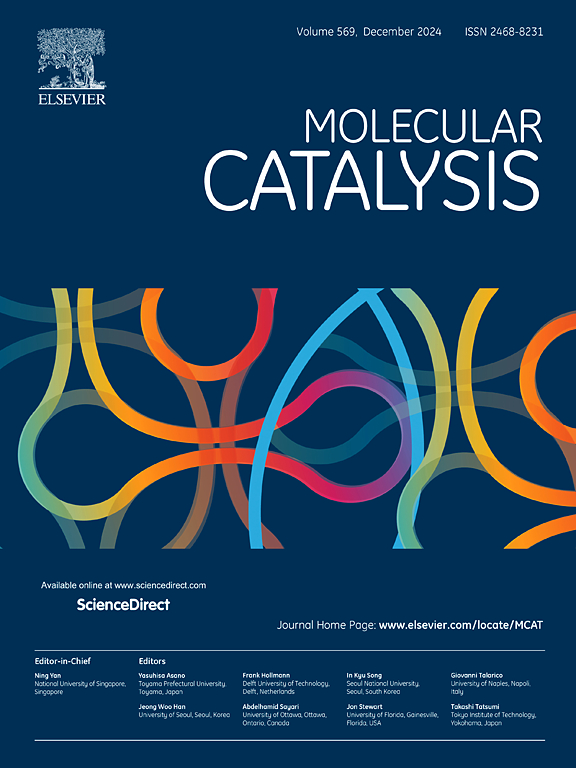Exploring the potential of cobalt-based catalysts in the methane dry reforming for sustainable energy applications
IF 4.9
2区 化学
Q2 CHEMISTRY, PHYSICAL
引用次数: 0
Abstract
Cobalt-based powder catalysts with different Co loadings were synthesized via wet impregnation using MgAl2O4 spinel as support. The catalytic properties of the solids were evaluated in the dry-reforming methane at different reaction temperatures and two CH4:CO2 ratios. The catalyst with higher cobalt content (13 %) presented superior performance due to increased Co0 species availability, confirmed by XPS analysis. Besides, this catalyst displayed remarkable resistance to carbon deposition at 550 °C and CH4:CO2 1: 1 ratio. In-situ DRIFT measurements demonstrated the formation and transformation of carbonate and hydrogen carbonate species during the DRM reaction, highlighting efficient CO2 and CH4 activation on the catalyst surface. Based on this data, a structured catalyst was deposited on top of the FeCrAlloy monolith, which was active, stable, selective for H2, and resistant against on/off cycles. Compared with the powder catalyst, the structured system displayed higher catalytic activity, possibly due to higher reducibility of metal species and improved heat transfer provided by the FeCrAlloy substrate. The results highlight the potential of Co-based structured catalysts for H2 or synthesis gas production processes.

探索钴基催化剂在甲烷干转化过程中的潜力,促进可持续能源应用
以 MgAl2O4 尖晶石为载体,通过湿法浸渍合成了不同 Co 负载的钴基粉末催化剂。在不同的反应温度和两种 CH4:CO2 比率下,对固体催化剂在甲烷干转化过程中的催化性能进行了评估。经 XPS 分析证实,钴含量较高(13%)的催化剂由于增加了 Co0 物种的可用性而表现出更优越的性能。此外,在 550 °C 和 CH4:CO2 比例为 1:1 的条件下,这种催化剂显示出显著的抗碳沉积能力。原位 DRIFT 测量结果表明,在 DRM 反应过程中碳酸盐和碳酸氢盐物种的形成和转化,凸显了催化剂表面对 CO2 和 CH4 的高效活化。根据这些数据,在铁铬合金整体上沉积了一种结构催化剂,这种催化剂具有活性、稳定性、对 H2 的选择性和耐开关循环性。与粉末催化剂相比,结构化系统显示出更高的催化活性,这可能是由于金属物种的还原性更高,以及铁铬合金基底提供了更好的热传导。研究结果凸显了 Co 基结构催化剂在 H2 或合成气生产过程中的应用潜力。
本文章由计算机程序翻译,如有差异,请以英文原文为准。
求助全文
约1分钟内获得全文
求助全文
来源期刊

Molecular Catalysis
Chemical Engineering-Process Chemistry and Technology
CiteScore
6.90
自引率
10.90%
发文量
700
审稿时长
40 days
期刊介绍:
Molecular Catalysis publishes full papers that are original, rigorous, and scholarly contributions examining the molecular and atomic aspects of catalytic activation and reaction mechanisms. The fields covered are:
Heterogeneous catalysis including immobilized molecular catalysts
Homogeneous catalysis including organocatalysis, organometallic catalysis and biocatalysis
Photo- and electrochemistry
Theoretical aspects of catalysis analyzed by computational methods
 求助内容:
求助内容: 应助结果提醒方式:
应助结果提醒方式:


